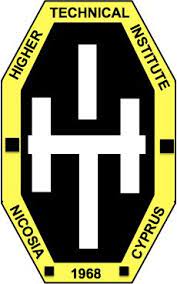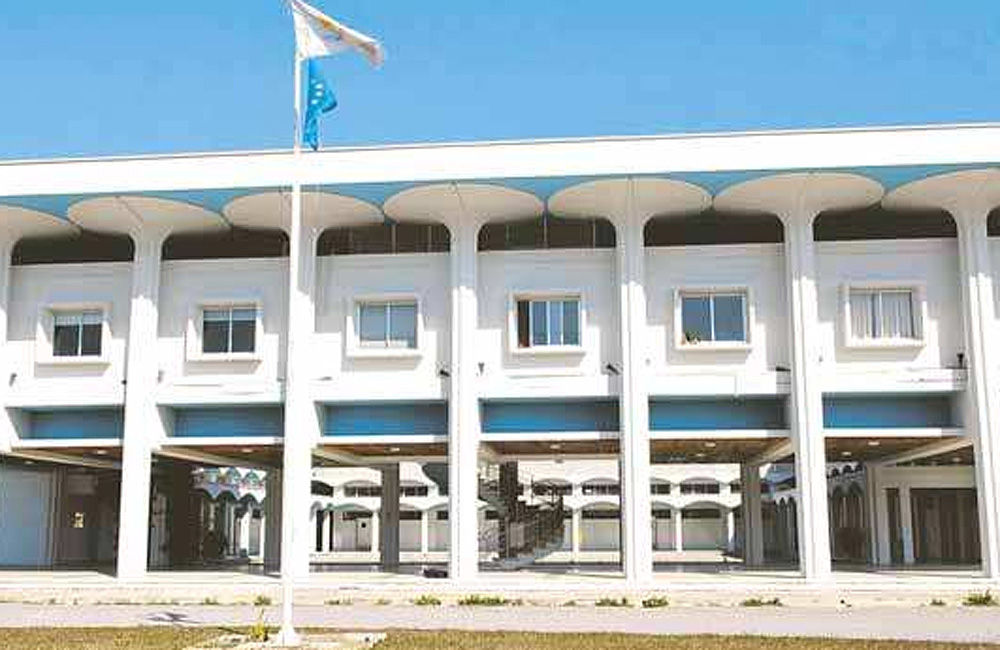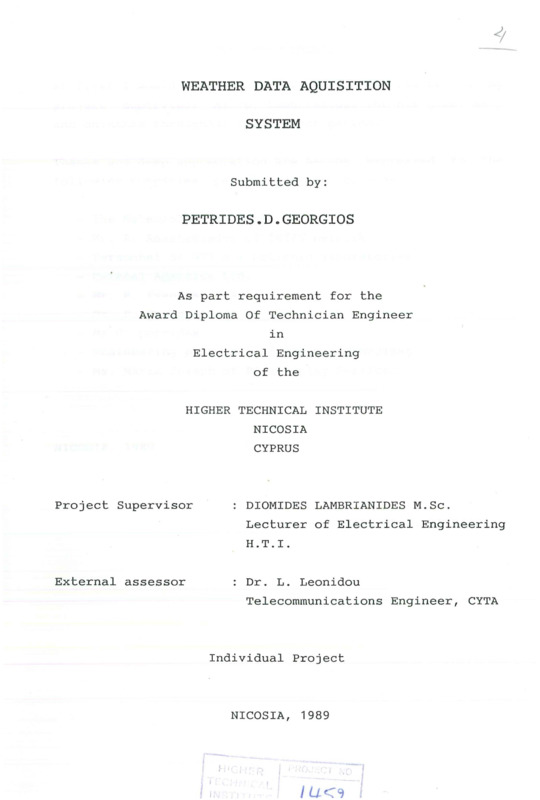Weather data aquisition system
- Τίτλος
- Weather data aquisition system
- Θέμα
- Weather--Data processing--Cyprus
- Δημιουργός
-
Petrides, Georgios
- Πηγή
- Higher Technical Institute
- Το πλήρες κείμενο είναι διαθέσιμο από το Υπουργείο Ενέργειας, Εμπορίου Βιομηχανίας και Τουρισμού
- Εκδότης
- Library of Cyprus University of Technology
- Ημερομηνία
- 1989
- Συνεισφέρων
- Lambrianides, Diomides
- Leonidou, L.
- Δικαιώματα
- Απαγορεύεται η δημοσίευση ή αναπαραγωγή, ηλεκτρονική ή άλλη χωρίς τη γραπτή συγκατάθεση του δημιουργού και κάτοχου των πνευματικών δικαιωμάτων.
- Μορφή
- Γλώσσα
- eng
- Τύπος
- text
- Αναγνωριστικό
-
EED 0054
- Σύνοψη
-
The metereology science, is mainly prediction of the weather. The predictions are based on the collected weather data, and thus the metereology department of the government of Cyprus is collecting all source of weather data, every day.
There are mainly, three ways to collect the weather data.
These are:
(a) Measuring with transducers, on the ground. i.e. every day, the metereologists have to visit every metereological and climatological station allover Cyprus, and these are more than a hundred. In these stations the measurements taken are: temperatures (maximum and minimum), humidity, wind velocity and direction and many others as well as observations. In order to take these measurements transducers are used. They are usually mechanical type,
but recently electronic transducers are introduced even equipped with digital to Analog converters RS 232 ports etc.
The aim of the project is to use telemetry for the reading of the transducers, and basically help this way of collecting weather data.
Another way of collecting data is:
(b) Radiosonde.
With this method, measurements of weather conditions up to 30 Km above ground is achieved. A transmitted equipped with temperature, humidity and pressure transducers, is connected at the end of a balloon filled with Hydrogen, which is taking the transmitter-transducer up in the sky. Working at the frequency of 406 MHZ, the transmitter sends information to the base station which decodes them in the form of a graph. On the balloon however, a reflector is attached, where signals of a radar are reflected thus giving the speed of the balloon and the wind velocity which are calculated by a microcomputer. This method is quite modern and the Radiosonde station at Athalassa, near HTI is very well equipped.
Finally the third metrhod is
(c) Satelite Photo.
A picture of the weather conditions is taken by a weather satelite and then transmitted "on the air". In Cyprus this picture is received at the RAF metereological station at Akrotiri and then passed over to the metereological department of the Ministry of Agriculture and Natural Resources. Figure 1 is a picture taken by a weather satelite over Africa, on the 18 of April 1989.
- Πολυμέσα
-
 EED 0054.pdf
EED 0054.pdf
Τμήμα του Weather data aquisition system


